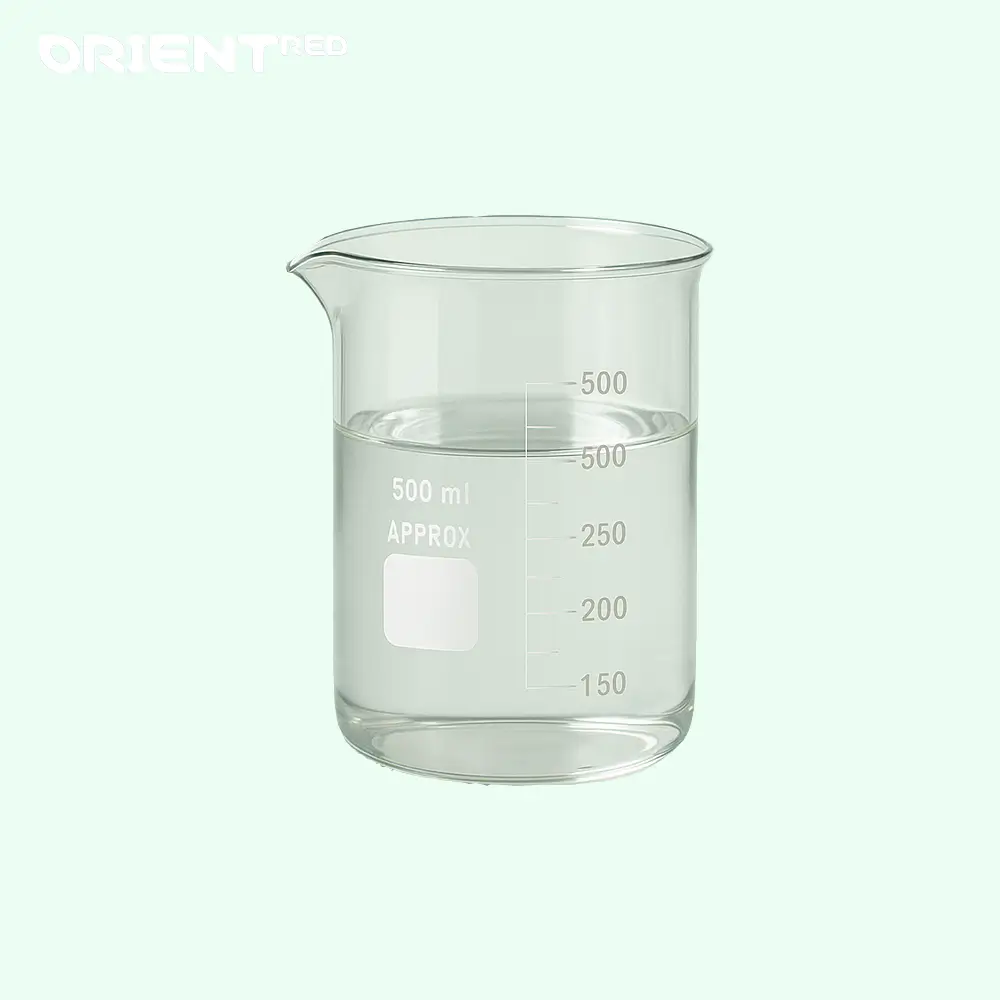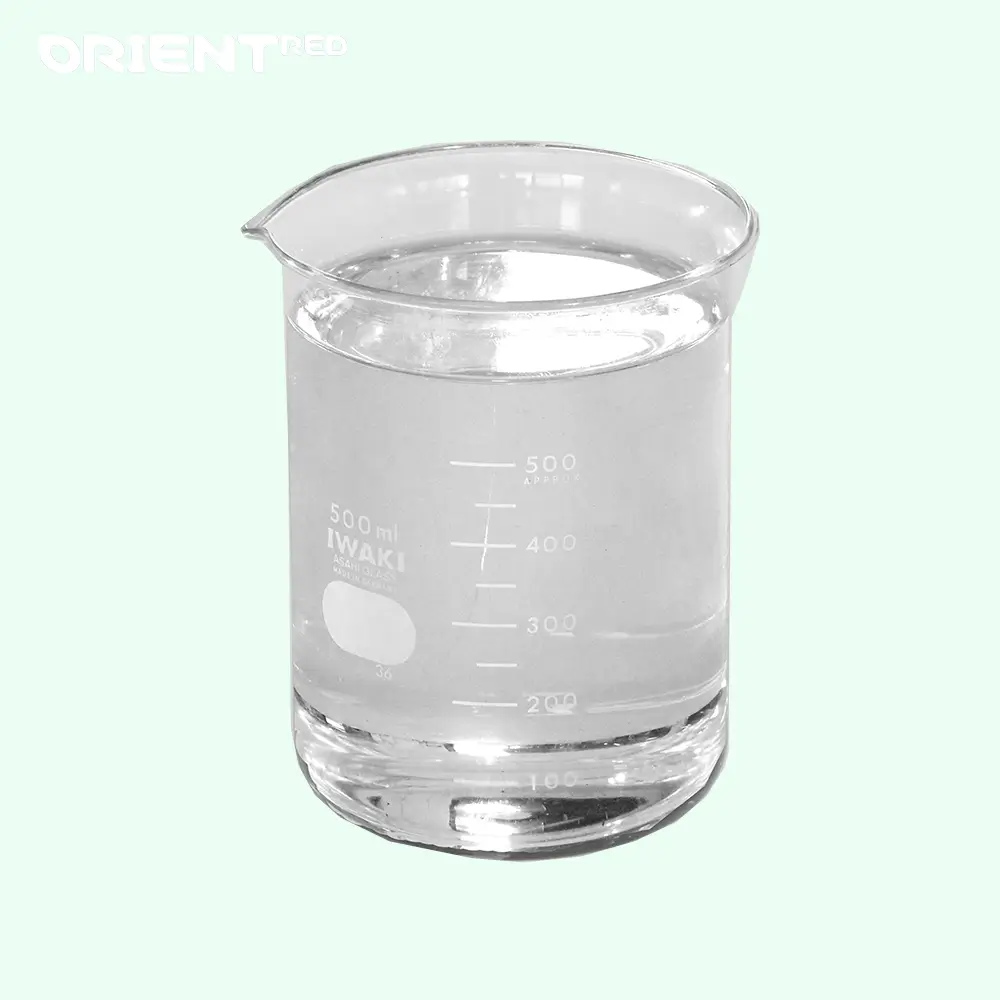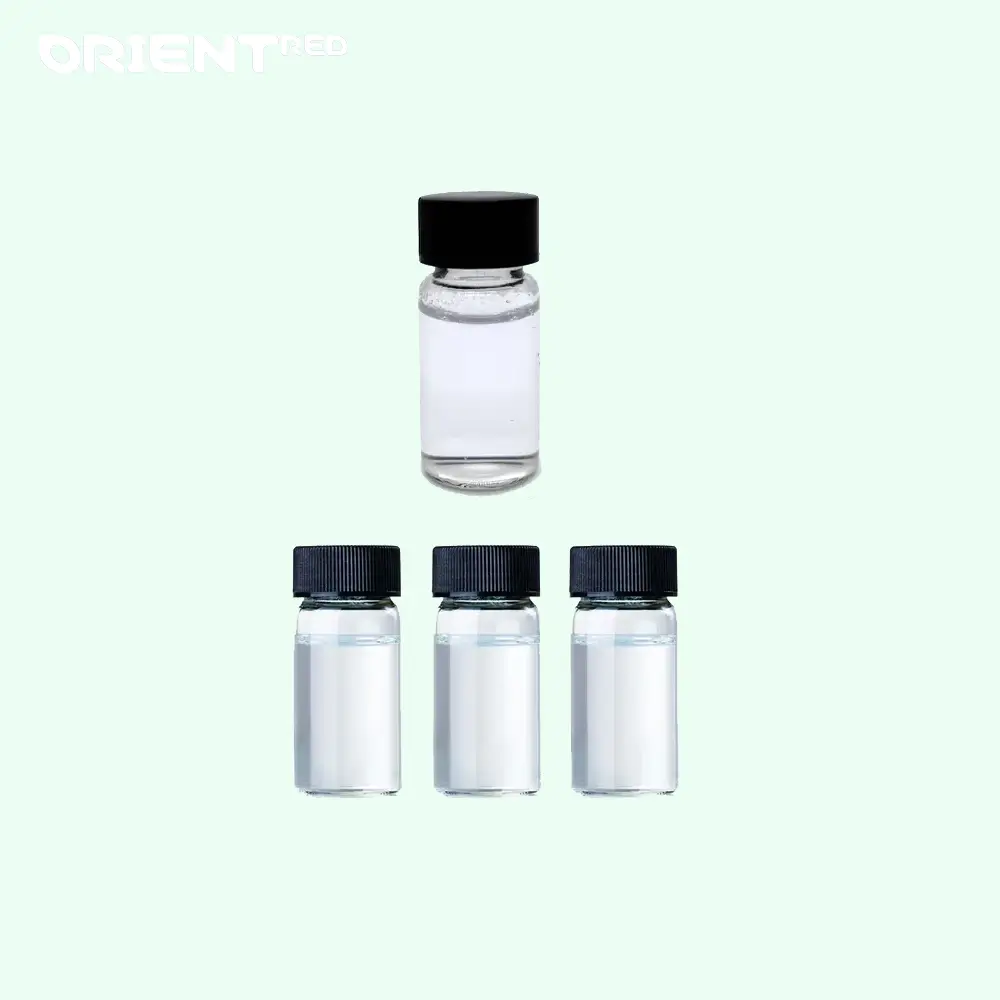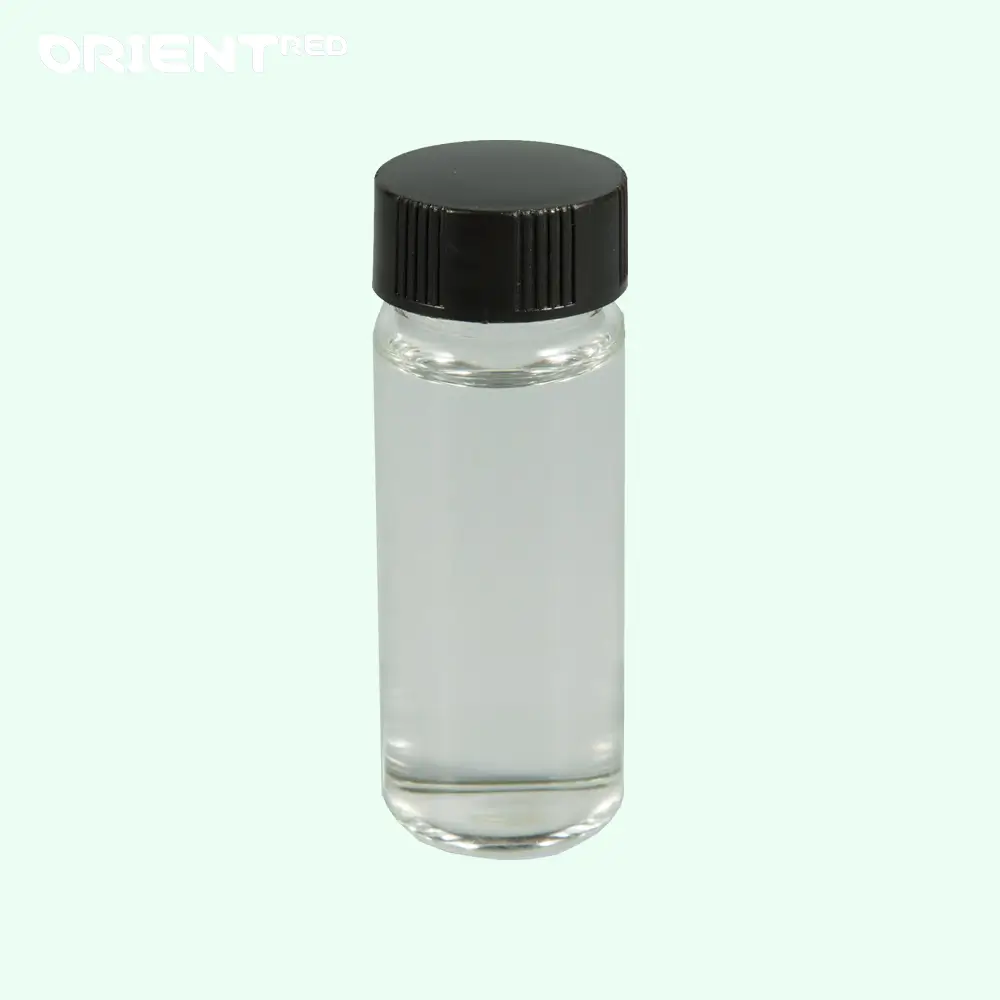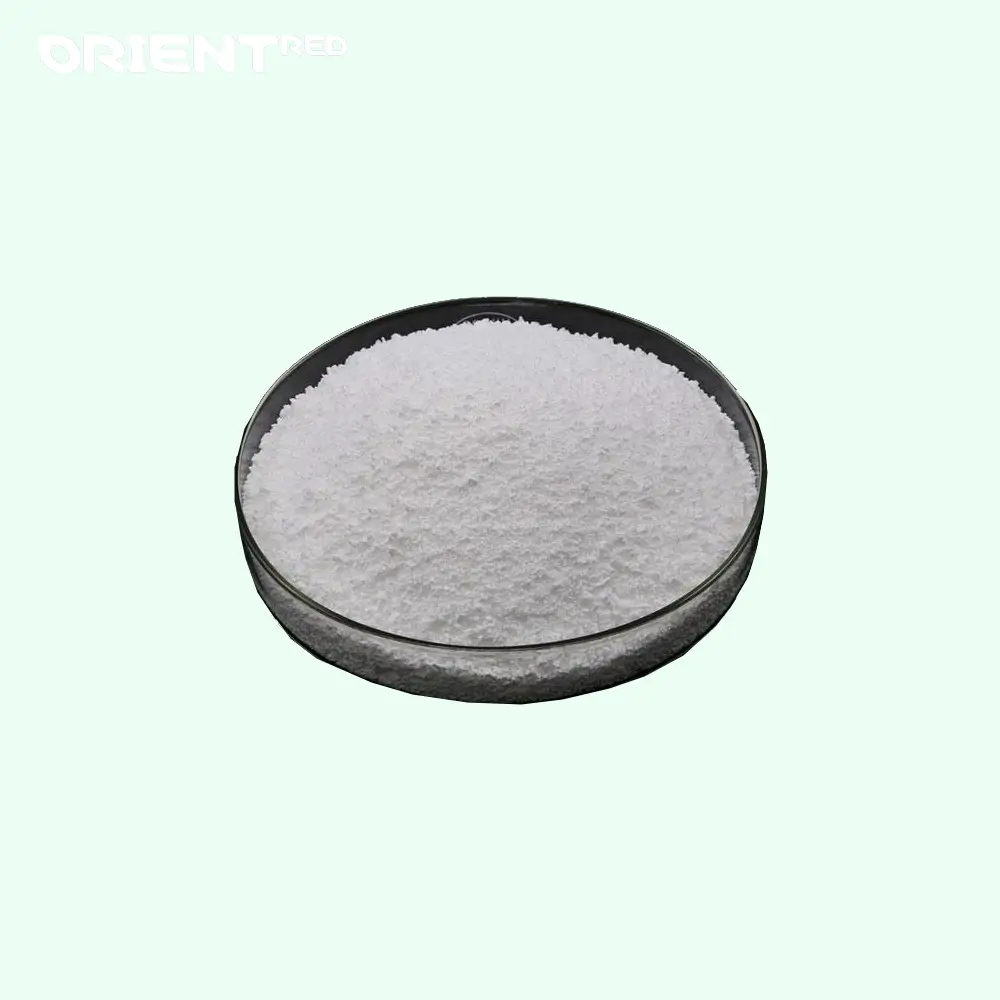Tetramethylguanidine | CAS: 80-70-6
| Name | Tetramethylguanidine; 1,1,3,3-Tetramethylguanidine |
| CAS | 80-70-6 |
| Appearance | Colorless transparent liquid |
| Molecular Formula | C5H13N3 |
| Molecular Weight | 115.18 |
| Assay | 99%min |
| Packing, Delivery | 180kg/drum; Delivery within 3-5 working days |
| Sample | Available |
| Payment | L/C, D/A, D/P, T/T, Other |
ORIENTRED is a leading manufacturer and supplier of Tetramethylguanidine (CAS No.: 80-70-6) in China, focusing on producing 1,1,3,3-Tetramethylguanidine with high purity/assay.
- Tetramethylguanidine is of good quality and cheap price, and is produced in strict compliance with ISO9001, cGMP and other standards.
- We provide free samples, trial orders, bulk purchases of tons of 1,1,3,3-Tetramethylguanidine, procurement tiered pricing, and cost reduction 15%+.
- Open third-party testing and fast logistics services
Contact us now to get your exclusive quotation and COA sample.
Tetramethylguanidine Basic Information, Physicochemical Properties, etc.
| Basic Information | |
| Name | Tetramethylguanidine |
| Synonyms | N’-Tetramethylguanidine; 1,1,3,3-TetramethylGuanidine(TMG); 1,1,3,3-Tetramethylguanidine,99%; N,N,N,N-Tetramethy1Guanidine |
| CAS Number | 80-70-6 |
| Molecular Formula | C5H13N3 |
| Molecular Weight | 115.18 |
| EINECS Number | 201-302-7 |
| Structural Formula |  |
| Physicochemical Properties | |
| Melting Point | -30 °C |
| Boiling Point | 162-163 °C (lit.) |
| Density | 0.916 g/mL at 20 °C (lit.) |
| Refractive Index | n20/D 1.469 |
| Solubility | Soluble in acetonitrile (a little), DMSO (a little), methanol (a little) |
| Water Solubility | Miscible |
| Form | Liquid |
| Color | Colorless |
| Stability | Stable. Flammable. Incompatible with strong oxidants, inorganic and organic acids, carbon dioxide. Air sensitive. |
| Acidity Coefficient (pKa) | 15.20±0.70(Predicted) |
| Safety and Regulatory Information | |
| Merck | |
| BRN | |
| NIST Chemical Substance Information | N,N,N’,N’-Tetramethylguanidine(80-70-6) |
| EPA Chemical Substance Information | Guanidine, N,N,N’,N’-tetramethyl- (80-70-6) |
| Other Information | |
| Detection Methods | |
Tetramethylguanidine Application, Use, Usage, Synthesis Method, etc.
Widely used in the synthesis of pharmaceutical and chemical raw materials.
In medicine, it is mainly used in the production of cephalosporin antibiotics.
In organic synthesis
1,1,3,3-Tetramethylguanidine is used as a strong, non-nucleophilic base.
Tetramethylguanidine is a strong organic base catalyst, mainly used as a carboxyl protective agent in cephalosporin drugs, and it can act as a good cosolvent.
As a strong base to prepare ZSM-5 zeolite.
Currently, it is mainly used in the production of cefazolin, cefradine, cefoperazone, cefaclor, and cephalexin to dissolve weak acidic substances such as 7-ADCA, 7-ACA, and 6-APA.
1,1,3,3-Tetramethylguanidine is an efficient and selective alcohol benzoylation catalyst.
It can also be used as a catalyst for polyurethane foam and for the leveling of nylon, wool and other proteins to improve the durability of wool.
As a catalyst to prepare a polyguanidine-based ionic liquid material for phosphopeptide enrichment.
There are three synthetic routes for N,N,N’,N’-Tetramethylguanidine.
Method 1
NaCN reacts with Cl2 to generate CNCl, which then reacts with dimethylamine and dimethylamine hydrochloride in a polar or non-polar solvent to generate tetramethylguanidine hydrochloride, which then reacts with a strong base in an aqueous solution and is extracted with an organic solvent to purify and obtain tetramethylguanidine.
Alternatively, tetramethylguanidine hydrochloride is directly reacted in an ethanol-sodium ethanol solution to obtain tetramethylguanidine.
Method 2
Dimethylamine aqueous solution is mixed with solid sodium cyanide, chlorine is passed through, and trichloroethylene is used to extract after the reaction. The organic layer is dimethylaminocyanide, and the aqueous layer is dimethylamine hydrochloride and sodium cyanide.
Dimethylaminocyanide reacts with solid dimethylamine hydrochloride in a polar solvent (such as nitrobenzene, isophorone, or phenethyl ether, etc.) to obtain tetramethylguanidine hydrochloride.
Tetramethylguanidine hydrochloride reacts with a strong base in an aqueous solution, is extracted with an organic solvent, and is purified to obtain tetramethylguanidine.
There are two methods for preparing tetramethylguanidine from tetramethylguanidine hydrochloride.
One is to dissolve the guanidine salt in water, neutralize it with excess 20% sodium hydroxide, extract it with toluene, and fractionate it to obtain tetramethylguanidine.
The other is to dissolve sodium ethoxide in anhydrous ethanol, add tetramethylguanidine hydrochloride under stirring, filter to remove NaCl, vacuum fractionate the tetramethylguanidine ethanol solution, collect the 42~54℃/1.46kPa fraction, and obtain tetramethylguanidine.
Method 3
NaCN reacts with Cl2 to generate CNCl, and then reacts with dimethylamine in a polar solvent or a non-polar solvent to simultaneously generate equimolar dimethylaminocyanide and dimethylamine hydrochloride, and then heats up to condense to obtain tetramethylguanidine hydrochloride, and then neutralizes with NaOH aqueous solution, extracts, and purifies to obtain tetramethylguanidine.
15% NaCN and Cl2 are simultaneously atomized in the atomizer, and then enter the chlorination tower to react. The reaction product, CNCl, is separated by a gas-water separator and a condenser to obtain a gas CNCl with a volume fraction of 97%.
Novel N,N,N’,N’-Tetramethylguanidine synthesis method steps
1. Pump 1000 kg of anhydrous ethanol into each 2000L reaction tank, start stirring, and introduce 350 kg of ammonia gas in the range of 10-30℃ to obtain an ethanolamine solution for standby use;
2. Add 800 kg of toluene and 116 kg of tetramethylurea into a 1500L reaction tank, pump 140 kg of oxalyl chloride into a metering tank, and then slowly drip oxalyl chloride into the reaction tank through the metering tank. The dripping is completed in about 5 hours, and the temperature is controlled during the dripping process.
3. After the dripping of oxalyl chloride in step 2 is completed, continue to keep warm, then heat to 60℃, keep warm for 4 hours, and then reduce the pressure.
4. Distillation, distill the mixed liquid obtained after decompression in step 3, stop distillation when the internal temperature of the reaction tank is 95-98℃, and cool down to 0℃;
5. Use a metering pump to pump in 600 kg of ammonia ethanol solution prepared in step 1. After adding, control the temperature at 20-30℃, react for 15 hours, then recover the alcohol at normal pressure to a top temperature of 71-85℃, and stop distilling when the internal temperature reaches 90℃;
6. Add 100 kg of water and 200 kg of toluene and stir for 1 hour, then stop stirring, let stand for 30 minutes, and separate the lower layer of water.
7. Add 200 kg of toluene to the water layer and stir for 25-35 minutes, then stop stirring and let stand for 25-35 minutes, separate the water, and barrel the toluene oil layer.
8. Repeat the extraction of the water layer with 200 kg of toluene, separate the water layer, combine the toluene layers taken out by the second extraction, and remove the toluene under reduced pressure. The internal temperature is 95℃ to recover the toluene until it is clean, then cool and remove the residue of the tetramethylguanidine crude product for vacuum distillation to obtain the finished tetramethylguanidine product.
1,1,3,3-Tetramethylguanidine Packaging, Storage, Delivery, Transportation, etc.
Packing: 180kg fiber drum or Customer specified packaging
Storage: It should be placed in a cool and dry.
Delivery: delivery within 3- 5 working days
Transportation: According to your needs
FAQ About 1,1,3,3-Tetramethylguanidine
Where can I buy tetramethylguanidine? What is the minimum order quantity? How much is it?
Answer:
Purchase through chemical manufacturers (such as ORIENTRED) or reagent suppliers.
Industrial grade usually has a minimum order of 25 kg/barrel, and laboratory grade can be purchased in 1 kg packages.
Contact us to get the latest prices, and you can get big discounts for large quantities.
How dangerous is N′-Tetramethylguanidine?
Answer:
It is highly corrosive + highly toxic!
Must:
Wear anti-corrosion gloves + goggles
Operate in an explosion-proof fume hood
No contact with skin/eyes


